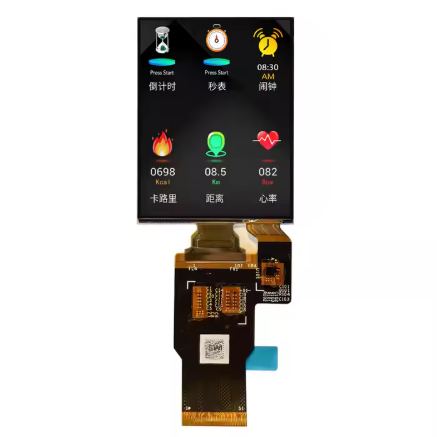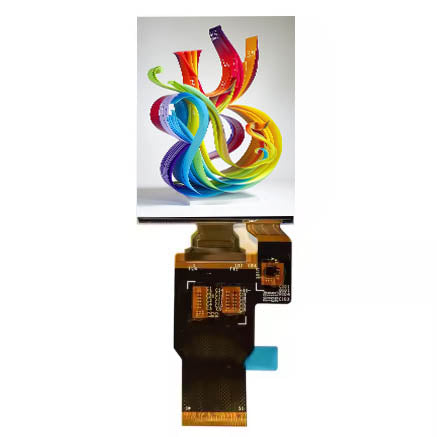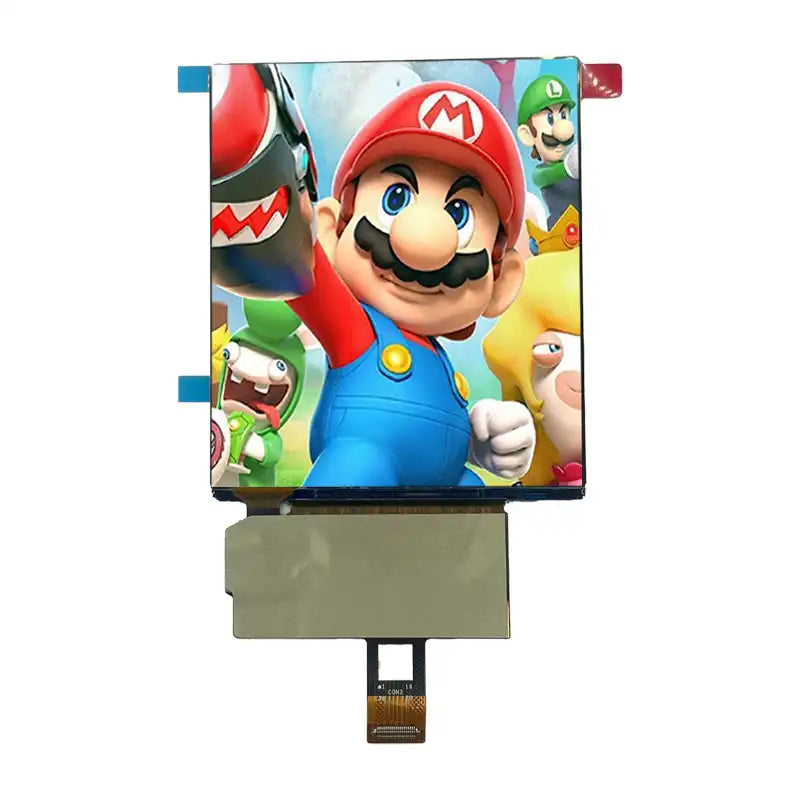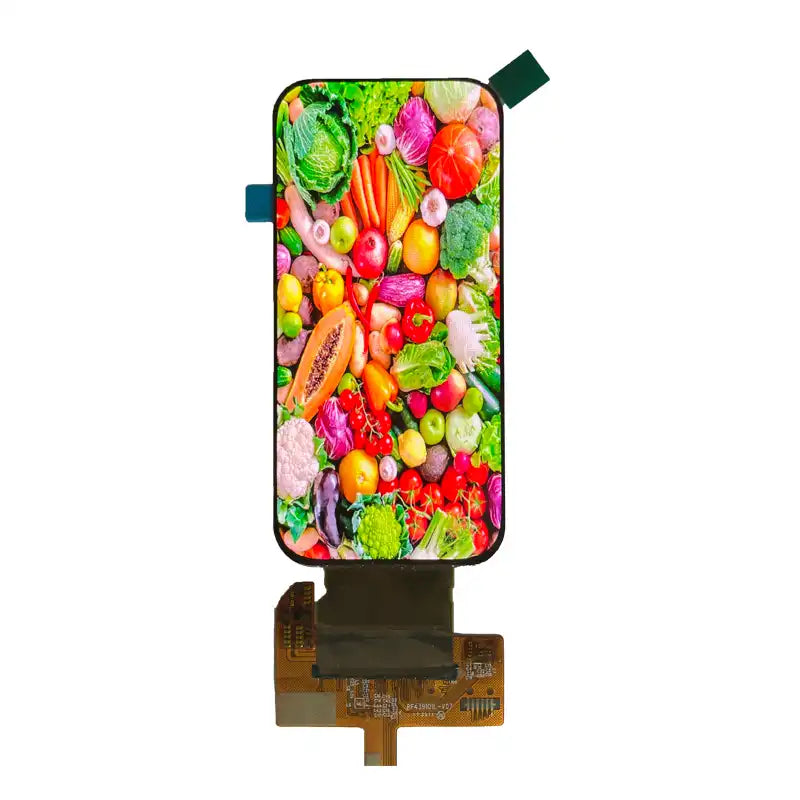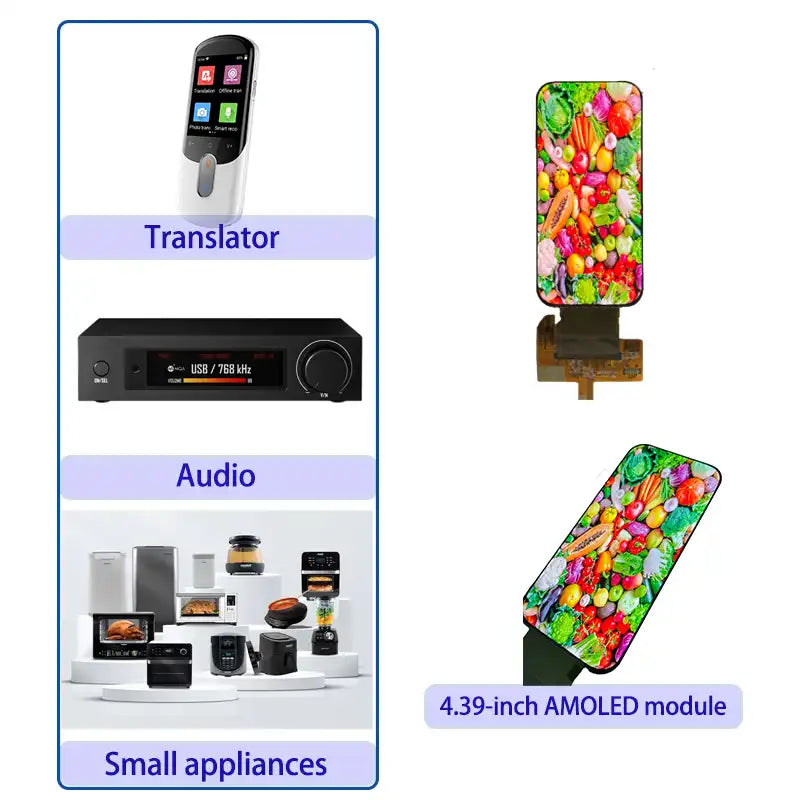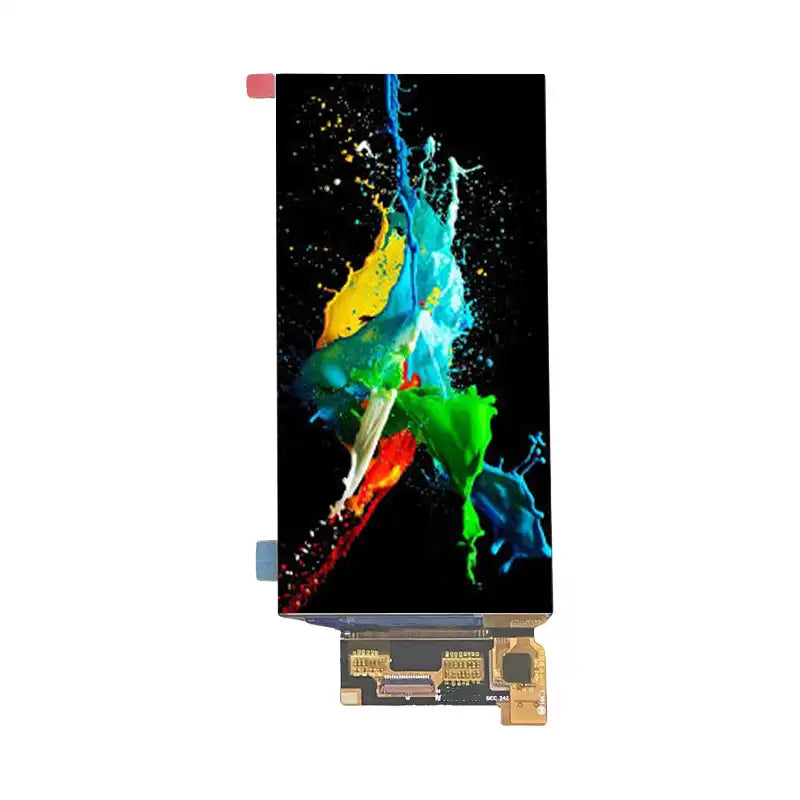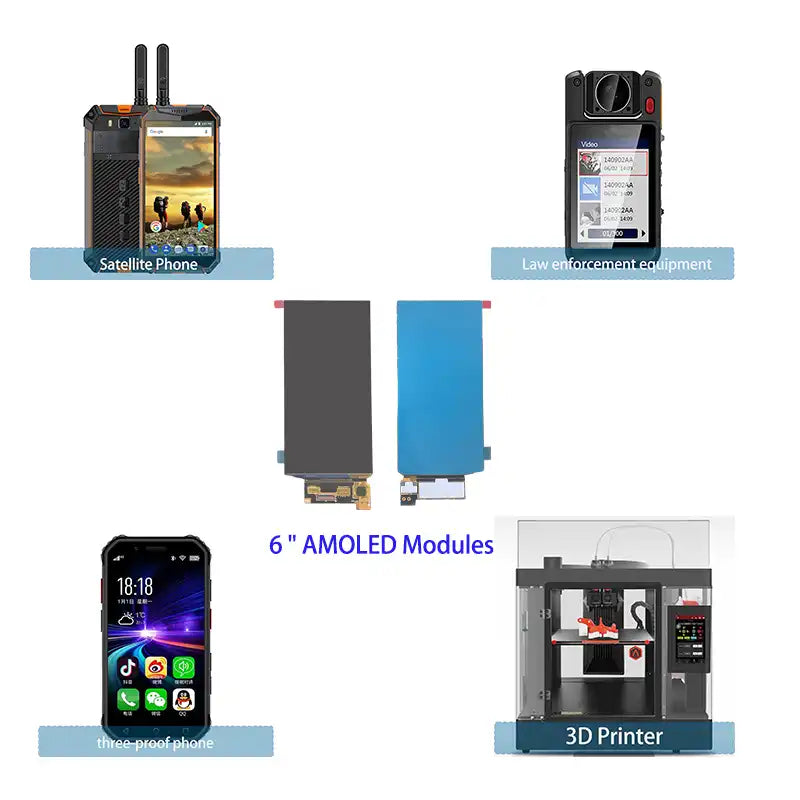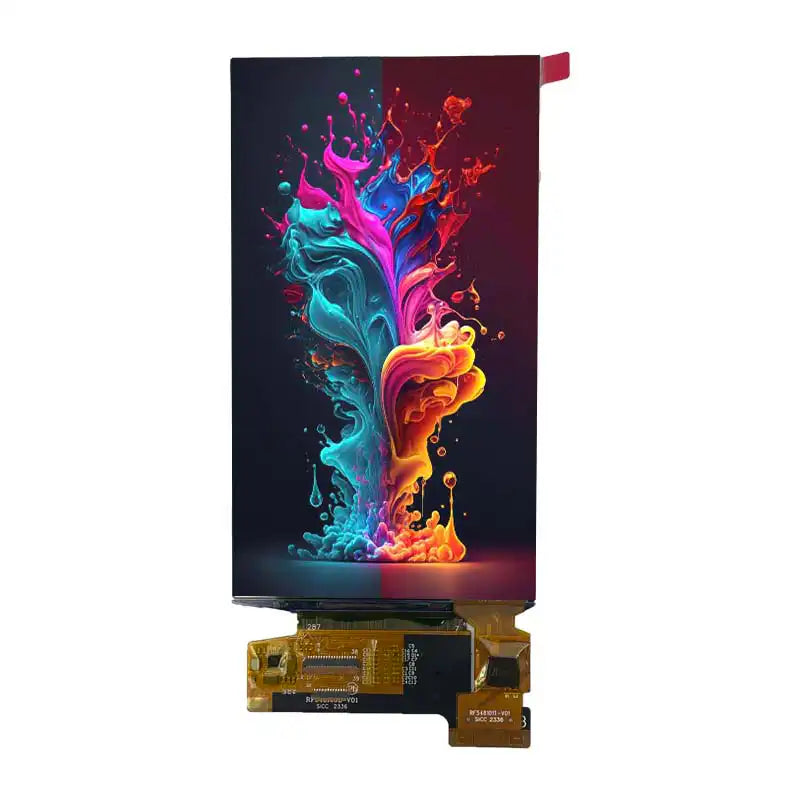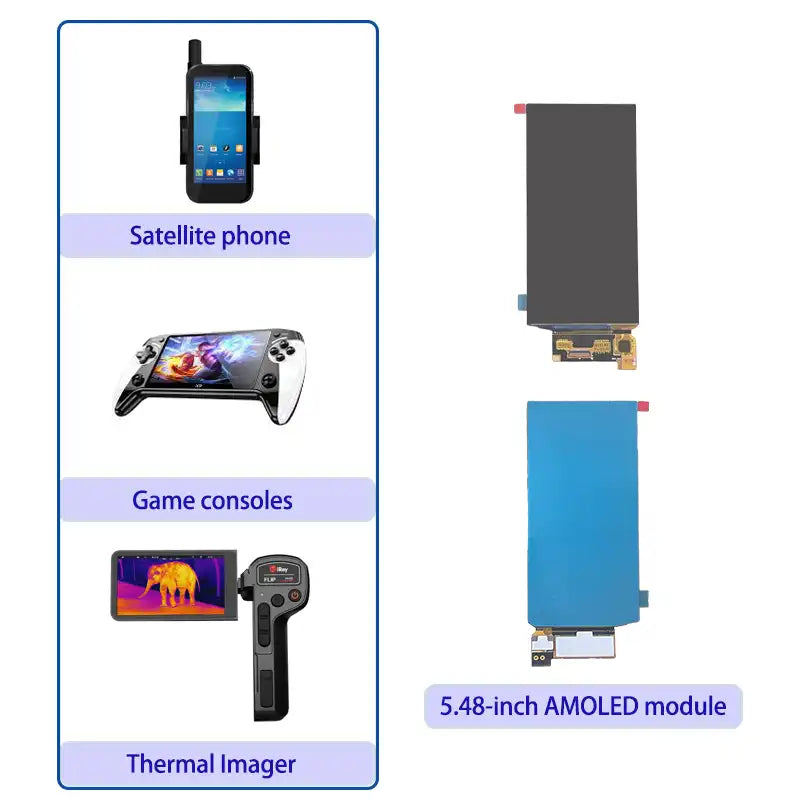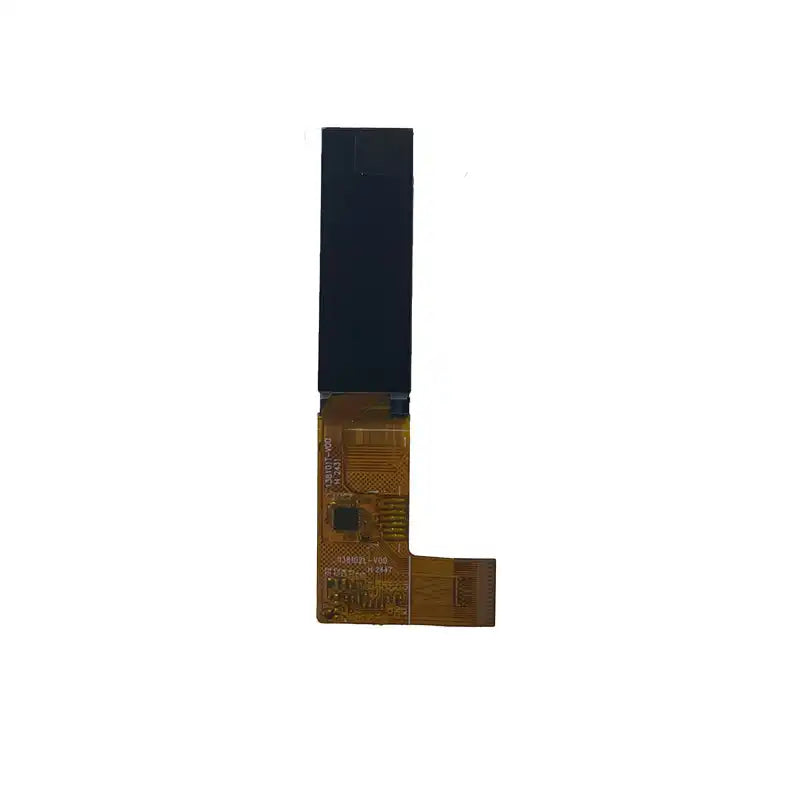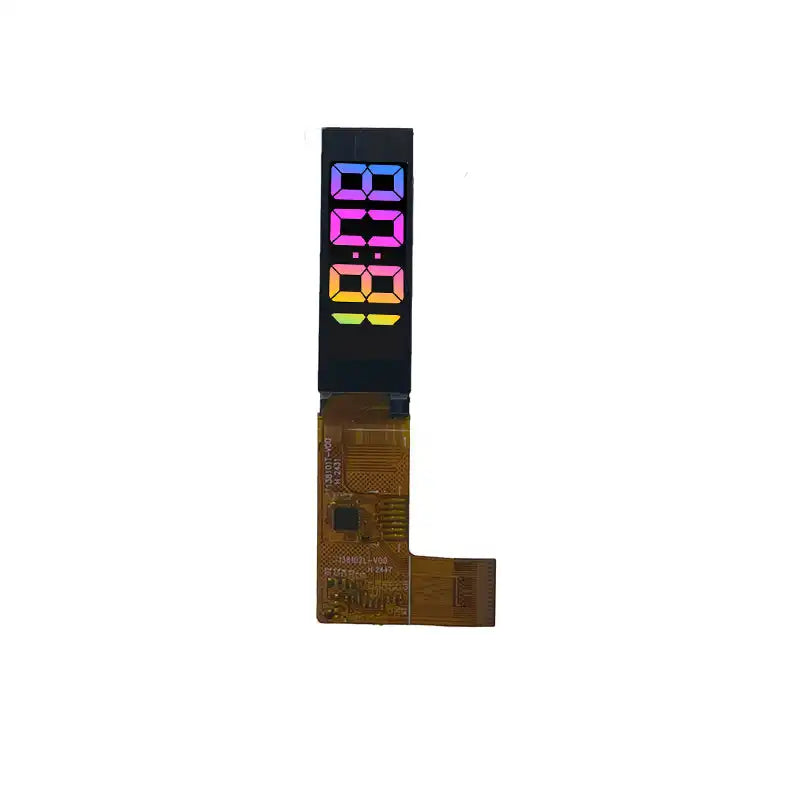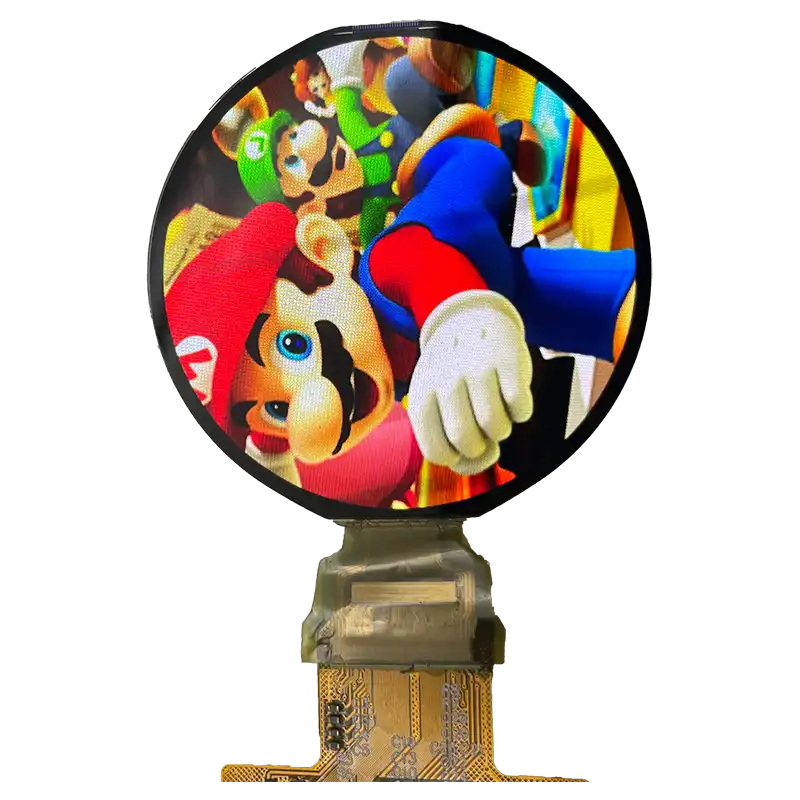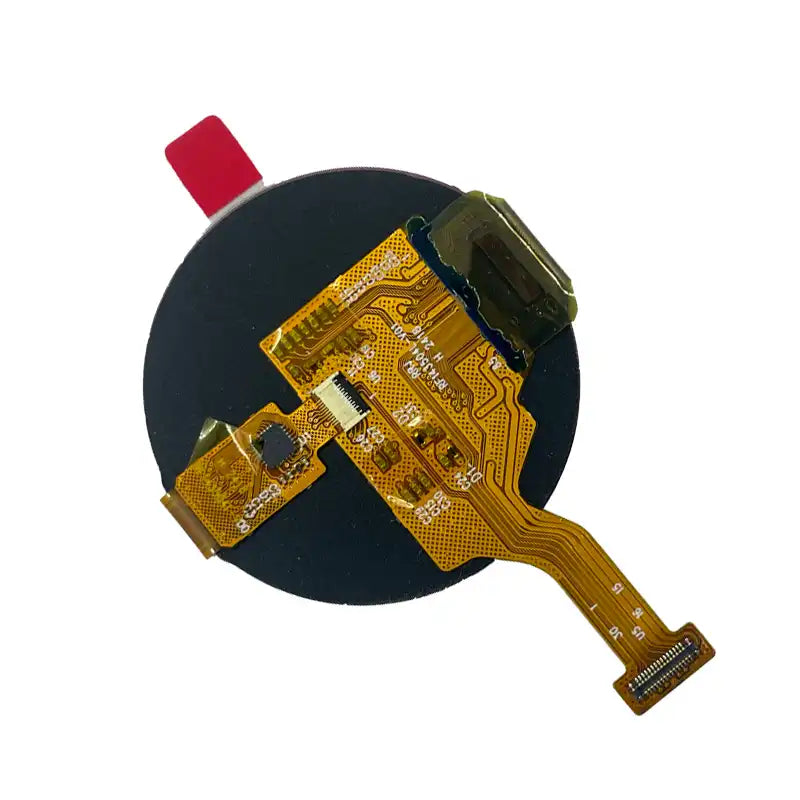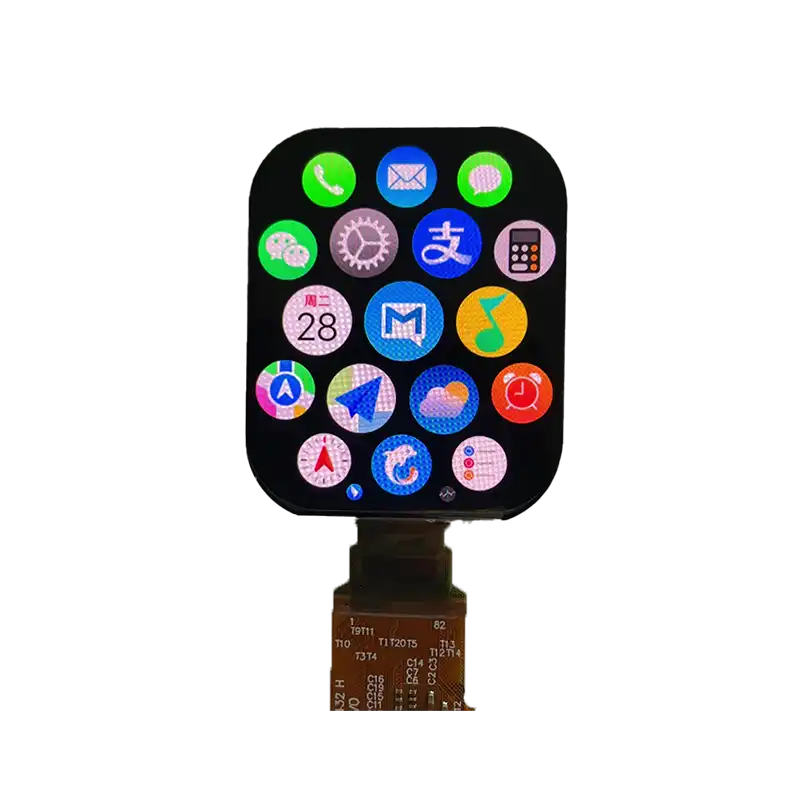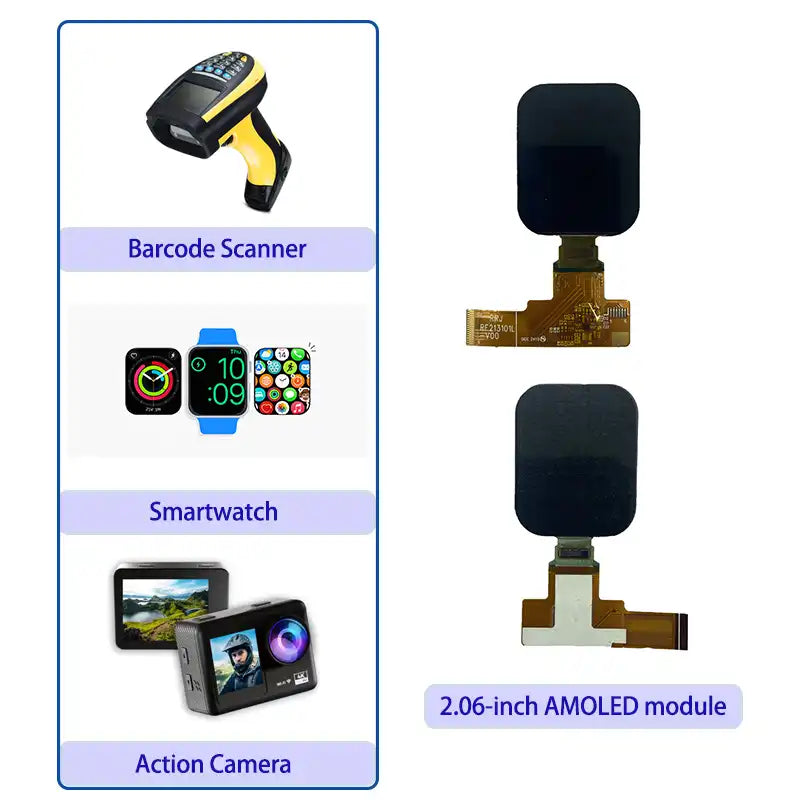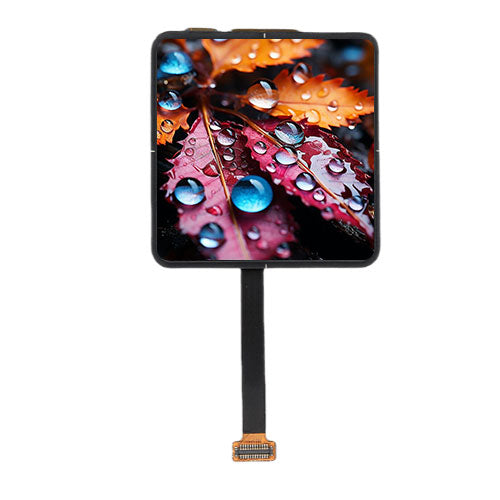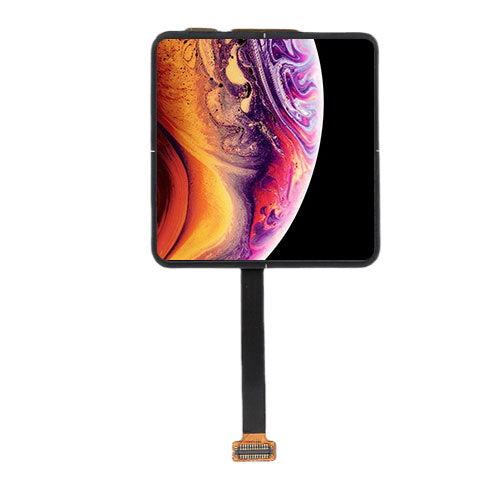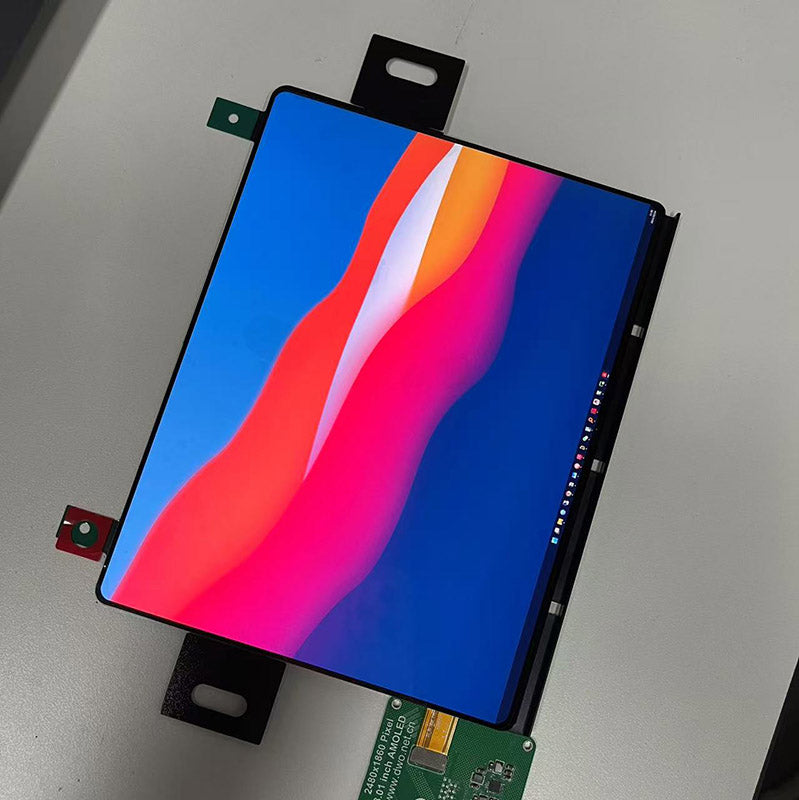
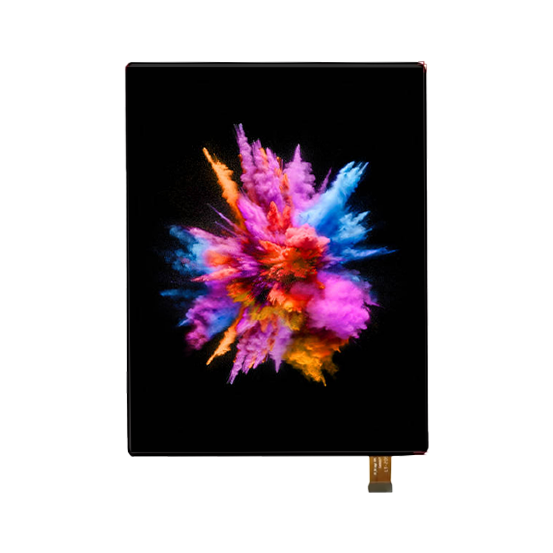

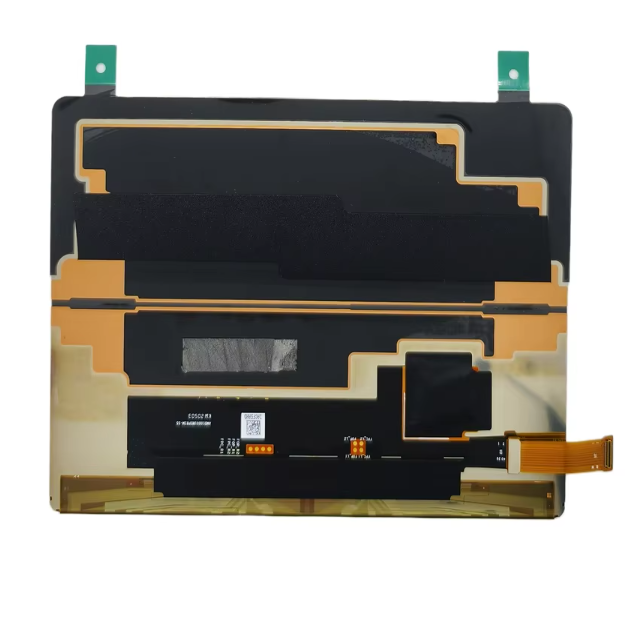
8.0 INCH WUXGA AMOLED Module 1920x1200 LTPS, LVDS & MIPI DSI
Engineered for Brilliance, Built for the Future
Introducing the 8.0" AMOLED Module
The 8.0" AMOLED module from Shenzhen Brownopto Technology Co., LTD is a high-performance, large-format display solution engineered for applications demanding vivid colors, true blacks, and exceptional energy efficiency. Leveraging advanced LTPS TFT backplane and self-emissive OLED technology, this panel delivers stunning visual clarity, wide viewing angles, and robust performance across industrial, automotive, and premium consumer applications.
Key Features:
- Screen Size: 8.0 inches (diagonal)
- Resolution: 1920 x 1200 pixels (WUXGA)
- Active Area: 172.80 mm (W) × 108.00 mm (H)
- Pixel Pitch: 90.0 µm (W) × 90.0 µm (H)
- Technology Type: AMOLED with LTPS (Low Temperature Polysilicon) TFT
- Color Depth: 16.7 million colors (24-bit RGB)
- Interface: LVDS (4-lane, 7-colors) or optional MIPI DSI (configurable)
- Polarizer Surface Treatment: HC (Hard Coating), 2H hardness, anti-reflective
- Response Time: ≤ 2 ms (typical, gray-to-gray)
- Contrast Ratio: Up to 500,000:1 (typical, self-emissive black = 0 cd/m²)
- Viewing Angle: 85°/85°/85°/85° (L/R/U/D, CR ≥ 10), nearly 180° symmetrical
- Environmental Compliance: RoHS 2.0 compliant
- Operating Temperature: -30°C to +85°C
- Storage Temperature: -40°C to +95°C
- Lifetime: 30,000 hours (typical, at 50% APL brightness)
- Frame Rate: 60 Hz (standard), up to 75 Hz (optional)
- Gamma: 2.2 (typical)
- Luminance: 800 cd/m² (typical, full white), peak 1000 cd/m² (center window)
Technical Specifications
| Parameter | Value |
|---|---|
| Screen Size | 8.0 inches |
| Display Type | AMOLED (Active Matrix Organic Light-Emitting Diode) |
| Resolution | 1920 (RGB) × 1200 pixels (WUXGA) |
| Active Area | 172.80 mm (W) × 108.00 mm (H) |
| Pixel Configuration | RGB Stripe |
| Brightness | 800 cd/m² (typical, full white), 1000 cd/m² (peak, 5% window) |
| Contrast Ratio | 500,000:1 (typical, self-emissive) |
| Viewing Angle | 85°/85°/85°/85° (L/R/U/D, CR ≥ 10) |
| Response Time | ≤ 2 ms (typical) |
| Interface | LVDS (4-lane, 7-colors) or MIPI DSI (4 lanes, 1.5Gbps/lane) |
| Operating Temperature | -30°C to +85°C |
| Storage Temperature | -40°C to +95°C |
| Power Supply | VDD: 2.7V–3.6V, VPOS: 2.8V–4.6V, VNEG: -0.6V to -5V |
| Lifetime | 30,000 hours (typical, 50% average picture level) |
| Frame Rate | 60 Hz (standard), 75 Hz (optional) |
| Surface | Hard Coating (2H), Anti-Reflective (AR) treatment |
Detailed Application Scenarios
The 8.0" AMOLED module is ideal for high-end applications requiring large, high-resolution displays with excellent contrast and reliability. Its superior image quality and wide temperature range make it suitable for mission-critical environments:
- Industrial HMIs: Advanced control panels, automation dashboards, and SCADA systems with daylight-readable clarity.
- Automotive Infotainment: Center consoles, digital cockpits, and rear-seat entertainment with cinematic visuals.
- Medical Imaging: Diagnostic monitors, surgical displays, and portable ultrasound with accurate color and contrast.
- Professional Tablets: Rugged tablets for field service, logistics, and defense with immersive UX.
- Digital Cockpits (Avionics/Marine): Primary flight displays and navigation systems with fast response and wide viewing.
- High-End Consumer Devices: Premium media players, smart home control hubs, and gaming handhelds.
- Security & Surveillance: Multi-channel NVR monitors and command center displays.
- Digital Signage: Indoor kiosks, retail displays, and information boards with vibrant visuals.
Handling Precautions
To ensure long-lasting performance and reliability, follow these handling precautions:
- Avoid mechanical shocks—do not drop or press on the screen surface.
- Use soft, lint-free, dry cloths for cleaning; avoid abrasive materials or solvents except ethyl/isopropyl alcohol.
- Do not disassemble or modify the module—internal components are sensitive and not user-serviceable.
- Prevent ESD damage—always use anti-static wrist straps, mats, and grounded tools during handling.
- Store in a cool, dry, dust-free environment between -20°C and +40°C if long-term.
- Avoid displaying static images for prolonged periods to minimize image retention risk.
- Power on/off according to recommended sequences to protect OLED materials.
Resource download: specification
Ready to Integrate?
Contact us for samples, datasheets, or custom design support.
Request a Quote
Featured collection
OLED Custom Solutions
Our company offers custom-made OLED solutions, tailored to your unique display needs, ensuring high-quality, precision, and satisfaction.
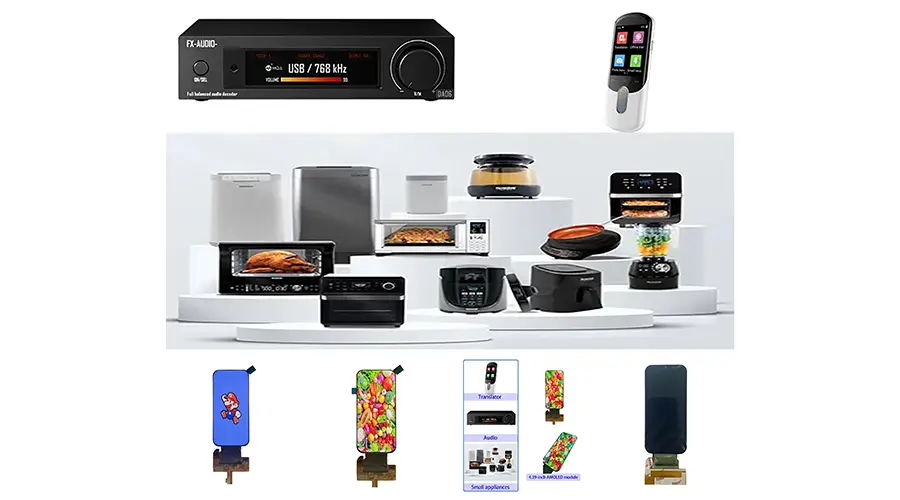
Size & Shape Customization
Tailor AMOLED dimensions and shapes (round, irregular, flexible/foldable) for wearables, phones, or industrial devices. Adjust form factors to match product design needs.
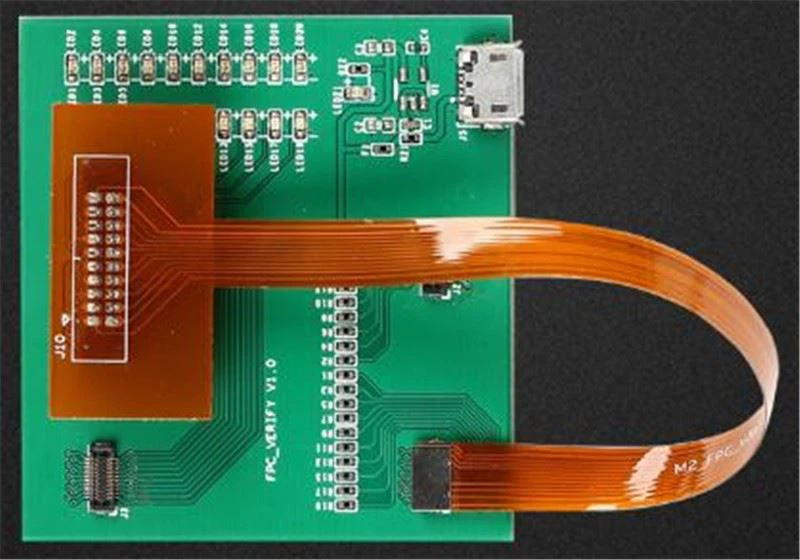
Resolution & Pixel Optimization
Offer HD to 4K+ resolutions and pixel densities for clarity. Enhance color accuracy and contrast for premium smartphones, tablets, VR/AR, and high-end displays.
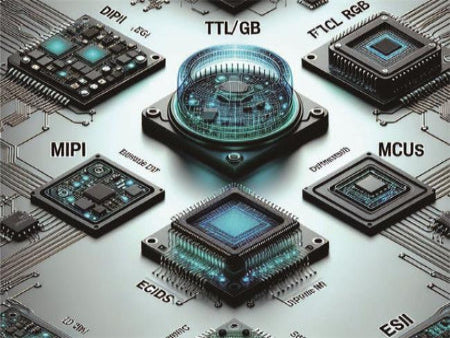
Interface & Driver Integration
Configure MIPI DSI/LVDS interfaces and driver ICs for seamless hardware compatibility. Add capacitive touch support for mobile, automotive, or industrial systems.
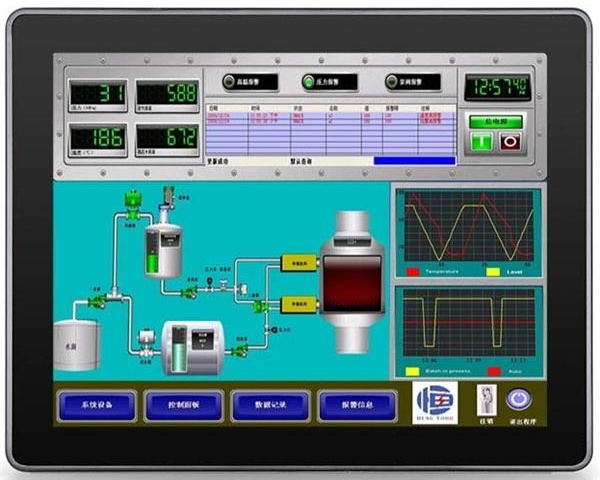
Optical & Durability Enhancements
Add anti-glare coatings, higher brightness, and IP-rated protection. Optimize for extreme temperatures, ensuring durability in outdoor, military, or harsh environments.
FAQ
Questions about OLED Displays
1. What factors affect the cost of a custom OLED?
- Size & complexity: Larger or flexible designs increase costs.
- Resolution/pixel density: Higher specs (e.g., 4K) require advanced manufacturing.
- Material quality: High-end materials (e.g., anti-glare coatings) add to pricing.
- Minimum order quantity (MOQ): Smaller batches may incur higher per-unit costs.
2. How long does it take to produce a custom OLED?
- Lead time: Typically 4–8 weeks after design approval, depending on complexity.
- Prototyping: Sample production takes 2–3 weeks for verification.
- Mass production: Delays may occur for high-volume orders or specialized components.
3. Can I request a flexible or foldable OLED?
- Yes, but with limitations:
- Flexibility: Curved designs require specialized substrates (e.g., polyimide).
- Durability: Foldable OLEDs need reinforced layers to prevent cracking.
- Cost: Flexible/foldable options are 20–50% more expensive than rigid panels.
4.How is the reliability of custom OLEDs tested?
- Key tests:
- Lifetime testing: Accelerated aging (e.g., 85°C/85% RH for 1,000 hours).
- Mechanical stress: Flexibility/folding endurance (100,000+ cycles for foldables).
- Environmental resistance: UV exposure, humidity, and thermal shock testing.
- Performance metrics:
- Luminance retention: >90% brightness after 10,000 hours.
- Color stability: Delta E < 3 for consistent color accuracy.
- Supplier accountability: Reputable manufacturers provide test reports and warranties (e.g., 2–5 years).
5.What industries benefit most from custom OLEDs?
- Consumer electronics: Smartphones, wearables, tablets.
- Industrial/medical: Control panels, diagnostic displays.
- Automotive: Dashboard screens, infotainment systems.
- Retail/entertainment: Digital signage, AR/VR headsets.

